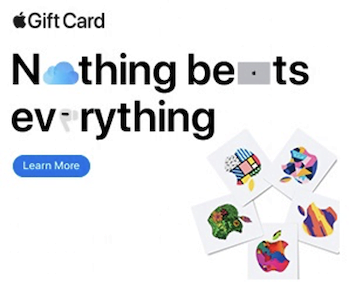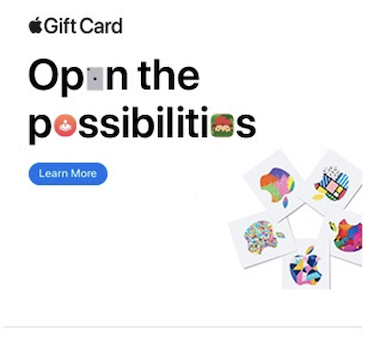-
 Written by Sean Dougherty
Written by Sean DoughertySenior Brand Creative at Funnel, Sean has more than 15 years of experience working in branding and advertising (both agency and client side). He's also a professional voice actor.
-
 Reviewed by Thomas Frenkiel
Reviewed by Thomas FrenkielThomas has over 10 years of marketing experience. After working in media and SEO agencies for 8 years, he joined Funnel in 2022.
Display advertising. It's the digital equivalent of traditional print and out-of-home advertising tactics. After all, display advertising can be neatly tucked into and alongside articles, pop up like a billboard before content loads, or blend so smoothly into content that you can't even tell they are there.
But given so much upheaval and change in the advertising industry in the last decade or so (ok, it's always changing), you may ask yourself, "What is display advertising now?" Well, you've come to the right place.
Today, we will go through all of the need-to-know elements of display advertising and cover why it is still a useful tactic to advertise your business in 2024.
Short summary
- What are display ads?
Display advertising is a digital marketing tactic used to promote products, services, and content. - The key elements
Display ads always need great visuals, copy, and a call to action. - How to succeed
Successful display advertising campaigns have a defined target audience, set goals/budget, and excellent user experience.
Read more about display ads below the image.

Understanding display ads
Display advertising is a form of online marketing that uses visuals, such as images or videos, along with engaging copy and a compelling call-to-action (CTA) to promote products, services, or content. It can be used to increase brand awareness, drive traffic to a landing page, and generate leads for your business.
Basically, it's a well-rounded digital advertising workhorse that can be used to support virtually any of your marketing goals.
In addition to their varied applications, display ads come in various formats like banner ads, native ads, and video ads. They can be found everywhere: on websites, apps, search engines (like Google Ads), social media platforms, and email.
This versatility is one of the key advantages to display advertising. However, the amount of flexibility that display ads offer can also be a challenge for some marketers. It can be difficult (even an art) to craft the most effective display ad possible. To do so, you need to understand the elements of a display ad and how each delivers your message.
Different types of display ads
Banner ads
Banner ads are visual ads on a web page or email. They can be static or animated. Banner ads usually appear at the top of a webpage (a leaderboard), down the side of a page (a skyscraper), or in a box somewhere (an MPU).
Native ads
Native ads are paid content designed and written in the same style as the rest of the site’s content. Because native ads aren’t always as recognizable as marketing, they often get higher click-through rates than banner ads.
Video ads
Video ads (also known as rich media ads) are most commonly used on video streaming sites like YouTube. They consist of a clip that plays before, after, or in the middle of another piece of video content. Because they’re moving images, they tend to be more effective than static ads.
Go deeper: read our guide to the 12 types of display ads.
Key components of display ads
The three main elements of display ads are visuals, copy, and a CTA. These components work together to capture the attention of your target audience and persuade them to take the desired action, such as visiting a landing page or making a purchase.
Each of these elements should align and adhere to your brand standards for visual effect and tonality.
You should also keep the creative focused and simple. While a picture may be worth 1,000 words, you'll only have a moment of the audience's attention. That means you only have time to deliver one compelling message in your display ads.
Let's break down how to do that with each of the three main components of a display ad.
Visuals
You can't really have a display ad without some form of visual. You'll need static imagery, video, or stylized copy treatments to grab your audience's attention. Your visual choice will likely depend on the format, size, and application.
Display banner ads, for instance, generally come in three sizes: large rectangle (336 x 280), medium rectangle (300 x 250), and leaderboard (728 x 90). They are often placed on various media websites around articles in prominent places. While this is good for grabbing attention, you don't have a lot of space to work with. Your creatives will have to be adapted to work with these sizes.
Visuals aren't just about grabbing attention, either. They should deliver part of your story and message.
Copy
Like other forms of advertising, the copy in your display ads should be concise and engaging. In image-based or video-based ads, the copy is what the audience will notice second.
Copy needs to translate the interest of the visual toward the action (expressed in the CTA) that you'd like the audience to take. Just like the visual, the copy needs to adhere to brand standards. It also may need to deliver features or advantages of your product or service. It also needs to convey what the brand stands for. All in a handful of words.
Application and ad sizes play a role here, too. Remember those leaderboard ads? They are incredibly thin and long. That may mean you only have room for copy in your CTA.
Call-to-action (CTA)
A strong CTA is essential to your display ads. Heck, a strong CTA is essential to any advertising or marketing tactic — even once they’ve clicked the ad and made it to your landing page. Just think about it — what good is grabbing the precious attention of your audience if you don't tell them to do something?
The CTA on your display ads should be clear and prompt the user to take action. Using action words that inspire urgency is normally a good idea. Examples include "Buy Now," "Sign Up Today," or "Learn More."
Ensure that the CTA aligns with the visuals and copy in your ad, creating a cohesive and persuasive message that drives users to take action.

Working in harmony
While these three elements are important, they should work harmoniously together. They should form an ad greater than the sum of its parts. The ad should simultaneously grab attention, deliver a message, and inspire action.
Take a look at Apple's effective display ads for their Apple TV gift card. The banner ad focuses on colorful cards and uses only four words in total for the copy. Though it may seem insufficient, the word selection in the ad copy works well.

Their other display ad formats have a consistent look and feel. In the same campaign, they also have two square display ads that use emojis creatively to replace letters in the copy.


Display ad formats
Display advertising comprises a variety of ad formats and sizes to cater to different marketing goals and target audiences. Banner ads, for example, are a mainstay of display advertising and are available in various types (like .jpg, .gif, HTML5, .mp4) and sizes.
Native ads, as we mentioned earlier, are designed to blend in with the content of the websites or apps they're displayed on, providing a less intrusive advertising experience. That means there aren’t any specific set formats for native ads. The best advice is to create your native display ads in the same style as the content around it. So if you’re advertising shoes on a fashion magazine site, it makes sense that your content looks like a link to an article on shoes, using a similar style to the publication.
Video ads are another common type of display ad that can either take full control of the screen for a period of time (in-stream) or run alongside the video experience (nonlinear).
By understanding the different display ad formats and sizes available, you can choose the most suitable options for your marketing objectives and target audience, optimizing the effectiveness of your display ad campaigns.
Creating a successful display advertising campaign
One display ad can only go so far in marketing your brand. You're better suited with a fully fleshed-out campaign that can deliver multiple messages that build on each other over time.
Just think about any consumer brand you've come into contact with. They aren't hitting you with a single banner ad over and over. That would lead to ad fatigue. Instead, they deliver multiple display ad creatives, united by a common concept, which vary a bit over time.
To successfully pull off a display ad campaign takes more than just a few ad creatives, though. You need to start strategically by defining your audience, identifying your goals, setting your budget, and then designing your ads.
1. Define your target audience
Defining a target audience for your display ad campaign is crucial. How can you craft the best message if you don't know who you're speaking to?
And when it comes to the target audience, it pays to be as specific and detailed as possible. You should understand what inspires and drives your target customer. How much can they spend? What emotional triggers would get them to invest in your goods or services? What are their other interests?
Based on this profile, you can then target your display ad campaign in different ways. This includes demographic targeting, geographic targeting, interest-based targeting, and retargeting.
But identifying and targeting your audience isn't a set-it-and-forget-it kind of thing. You should continuously analyze your targeting data and refine your campaign to ensure the most effective audience targeting and overall campaign performance.
Also read: Contextual targeting vs. Behavioural targeting
2. Set campaign goals and budget
The most successful campaigns know exactly what they are trying to achieve, and how much money they can invest to see success.
Start by setting at least one main goal. This could be a certain amount of organic traffic to a landing page, an increase in click-through rates, an increase in net promoter score (NPS), or another key metric.
You'll then need a plan for how you will hit your mark. How many people will you need to reach? How many platforms or outlets will you need to advertise on? How long will this campaign have to run?
The answers to these questions will help you determine how much you should invest in this campaign.
3. Design engaging ads
Once your strategy is in place, it's time to make a kick-ass brief and hand it off to your creative team. With a deep understanding of the audience they are trying to reach, the methods they have to reach that audience, and the allocated budget, your team can create much more engaging and effective display ads.
And much like your audience targeting, designing effective display ads in a campaign should be considered an iterative process. Take the opportunity to test different versions of your ads to optimize your campaign quickly.
Display advertising networks
Display advertising networks are platforms that enable advertisers to purchase ads on websites and apps, reaching a wide audience across numerous platforms. Some of the most widely used display advertising networks include Google Ads and Google Display Network), AdRoll, Stackadapt, and Amazon Ads. These networks offer various targeting options, ad formats, and sizes to help you create tailored and effective display ads campaigns.
By leveraging popular display ad networks, you can access a larger potential at a more effective price than buying all those placements individually. You'll also have access to advanced targeting capabilities, performance analytics, and optimization tools.
Measuring display ad performance
The real key to understanding your marketing success is measurement. You should be tracking performance data from all of your advertising tactics. Marketing reports can show you if you're making progress towards your key goals and metrics.
Since display ads are used primarily as a top-of-funnel advertising strategy, you'll likely be looking at a few tracking metrics: impressions, cost per impression, and brand indicators like NPS.
Digital display advertising should not be measured solely by clicks and conversions, as it serves a different purpose than paid search advertising. Display ads aim to create brand and product awareness, which can lead to increased sales, website visitors, and query calls. While they may not generate immediate conversions, they can plant a seed in users' minds to consider a purchase later. Clicks and click-through rates can help identify ad fatigue but do not fully measure the impact of display ads.
To assess the effectiveness of your display ads, consider conducting an incrementality test. This test can determine if a marketing event, like a site conversion, was influenced by your display ads over a set period and budget. By isolating the impact of your digital advertising tactics on sales, you can more accurately measure the effectiveness of each tactic. Incrementality testing can be a valuable initial step in evaluating the true impact of an ad on conversions, regardless of clicks.
Best practices and tips for effective display ads
When creating effective display ads, it's important to prioritize the user experience, test and optimize, and ensure alignment with other marketing channels.
Respect the user experience
The user experience should always be a top priority when designing display ads (or any digital advertising), as it can lead to higher engagement, loyalty, and brand support. This means, as much as possible, ensuring your ads do not disrupt the user's browsing experience or block the content they wanted to see (pop up ads, we’re looking at you).
Yes, you need to grab their attention, but waving a giant digital sign in front of their face isn't the way to go about it. Instead, rely on your high-quality visuals, concise and engaging copy, and clear CTAs to provide users with a seamless experience.
Test and optimize
We've said it before, and I'll say it again: you need to test, test, test. Regular testing can make the difference between money spent and money invested. That's because testing allows you to refine your online advertising until it performs at its peak potential.
A/B testing, multivariate testing, or split testing can help determine which creatives (and which elements of those creatives) are actually breaking through to your audience. Then, by focusing on the most effective parts of your display ads and campaigns, you can ensure you are getting the greatest performance from your advertising spend investment.
Align with other marketing channels
Your display advertising is most effective when it aligns with and echoes your messaging on other channels and marketing tactics. It should align with your public relations outreach, presence at events and trade shows, social media advertising, and more. Many businesses use marketing mix modeling (MMM) to track the impact on sales and performance before and after a marketing campaign.
When you can present a united front in your business's marketing efforts, you will build a stronger brand more quickly. This also means greater display advertising effectiveness, and greater return on ad spend all the way around.
In other words…
Display advertising is a powerful tool that can help you grow your business, increase brand awareness, and reach a wide audience across numerous platforms. By understanding the key components of display ads, utilizing various ad formats and sizes, and creating effective display ads campaigns, you can maximize your return on investment and achieve your marketing goals.
Remember to prioritize user experience, test and optimize, and align with other marketing channels for the best results. Start implementing these strategies today and watch your display ad campaigns soar!
Frequently asked questions
What is meant by display advertising?
Display advertising is creating and placing visuals, such as images and videos, on websites, social media, or other digital platforms to advertise products or services. This kind of online advertising is created to encourage users to take a desired action, often in the upper part of a sales funnel.
What are two types of display ads?
There are two main types of display ad: static images and dynamic ads, both of which can help companies create powerful marketing campaigns that connect with their target audience.
Video ads and native ads are also popular options for enhancing brand visibility.
What are the benefits of display advertising?
Display advertising can be an incredibly powerful way to increase brand recognition and engagement, drive more website traffic, and more. It provides excellent versatility and can deliver a message extremely quickly. Additionally, it has the potential to reach a huge amount of people when done right.
Are search ads also display ads?
Search ads are sponsored results that appear directly under the search bar. They can appear in search engines or in places like the App Store or Google Play. Though they're not technically display ads, search ads are a great addition to your marketing campaigns. You can read more about the difference between search ads and display ads on the blog here.
What are responsive display ads?
Responsive display ads are ads shown on websites and apps that automatically adjust their size and format to fit the available space. You can create responsive display ads using platforms like Google Ads and use a combination of text, headlines, images, and videos to deliver the ad message.
What are interstitial ads?
Interstitial ads are full-screen pop-up ads. They typically appear at transition points in your experience, like:
- Between levels in a game
- After completing a task in an app
- While switching between sections of a website
These ads cover the entire screen and require you to take action, such as closing the ad to return to your content or clicking on it to visit the advertiser's landing page.
*Note: the featured image for this article was created using generative AI.
-
 Written by Sean Dougherty
Written by Sean DoughertySenior Brand Creative at Funnel, Sean has more than 15 years of experience working in branding and advertising (both agency and client side). He's also a professional voice actor.
-
 Reviewed by Thomas Frenkiel
Reviewed by Thomas FrenkielThomas has over 10 years of marketing experience. After working in media and SEO agencies for 8 years, he joined Funnel in 2022.
